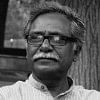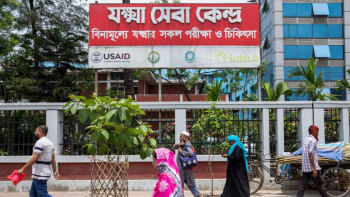Peoples' master plan for a livable future

Since early 1980s, successive regimes in Bangladesh have been undertaking pro-corporate, neo-liberal economic reforms guided by the World Bank, IMF and ADB. Along with education and healthcare, the environment, energy and power sectors have been direct victims of these 'reforms'. As a result, the capabilities of national institutions were undermined, people and environment ignored, and several bad deals signed on natural gas, coal and electricity generation. Net result for the country: unstable system, severe corruption, rising prices of gas and power, high social and environmental costs, and increasing financial burden.
The government's present master plan for power generation is a cumulative outcome of the pro-corporate agenda. This was prepared by a team from Japan International Cooperation Agency (JICA), and was supported by business groups, such as Tokyo Electric Power Services Company Limited and Tokyo Electric Power Company Holdings Inc. The plan leaves Bangladesh dependent on huge loans, foreign companies, imported coal and liquid natural gas (LNG), coal-fired power plants mostly in the coastal region, and nuclear power, up to 2041. If it goes as planned, the largest mangrove forest of the world, the Sundarbans, will be ruined, the danger from climate change will increase manifold, the country will incur huge financial burden, and people will be forced to purchase electricity at a much higher and irrational price.
The National Committee to Protect Oil, Gas, Mineral Resources, Power and Ports is proposing the "Peoples' Master Plan for Power and Energy (2017-2041)" as an alternative to the government's master plan.
COMPARISON BETWEEN THE TWO APPROACHES
It aims to ensure a continuous, safe and cheap power supply for every citizen and for the economy; to identify sources of power that do not cause environmental damage and financial burden; to find an economically feasible and affordable energy mix for the country; and to develop an appropriate policy framework and institutional setup for capturing new knowledge, innovation and developing technology.
In the alternative master plan, the Committee challenges undertaking projects of mass destruction in the name of development. In order to understand the current situation, it studied the global scenario, the comparative development of technology, and the comparative movement of cost, and reached the conclusion that power generation from fossil fuel and nuclear energy is suffering from technological stagnation, resulting in huge environmental and social costs. On the other hand, renewable energy is undergoing innovations that make it much cheaper and more environment-friendly.
The Committee also studied Bangladesh's potential and challenges. For solar power, we examined the problem of land, and found that only about 0.55 percent of land will be needed to reach our target by 2041 with the latest technology. Wind and waste energy were also studied. Experts from the University of California, Berkley, the Institute of Energy Economics and Financial Analysis and International Renewable Energy Agency (IRENA) all were optimistic about Bangladesh's potential to carry out pro-people transformation. We considered only 25 of the average potential in our projection to make it more feasible.
In the short term (2017-21), the Committee's plan does not deviate far from the government regarding our energy mix, but it proposes a fundamental shift in the policy framework. This includes scrapping Rampal coal and Ruppur nuclear power plants and replacing those with solar, wind and gas-based power plants in appropriate places; cancelling gas export deals; developing and engaging PetroBangla and Bapex in further gas exploration on-shore and off-shore; and building institutional setups to mainstream renewable energy.
With the right policy and institutions, in the mid-term (2021-31), it will be possible to develop our renewable energy sector while keeping natural gas-based power plants in the lead (natural gas: 49 percent, renewable: 39 percent, and other: 12 percent). In the long-term (upto 2041), we will embrace a qualitative shift in the energy mix (renewable: 55 percent, natural gas: 37 percent, other: eight percent).
The government's reliance on coal, LNG and nuclear will result in continuous increase of power tariff in coming years. The Committee's proposal ensures a power tariff only 40 percent of that of the government's.
After studying all facts and potentials we are convinced that renewable energy is the future of the earth. China and India along with many other countries have realised this and have been taking massive strides to transition to renewable energy. But these same countries are transferring their plants to Bangladesh to destroy the Sundarbans and the coastal belt.
Projects of mass destruction are not acceptable in the name of development. The people of Bangladesh deserve a far better future, and it is possible. The Committee's master plan emerged from a people's movement; it took shape from the work of many. Some people will call it audacious. But yes, we need to be audacious to embrace a people and environment friendly vision, and to make our country livable, safe and prosperous.
Anu Muhammad is member secretary of the National Committee to Protect Oil, Gas, Mineral Resources, Power and Ports, and Professor of Economics at Jahangirnagar University,

 For all latest news, follow The Daily Star's Google News channel.
For all latest news, follow The Daily Star's Google News channel. 



Comments